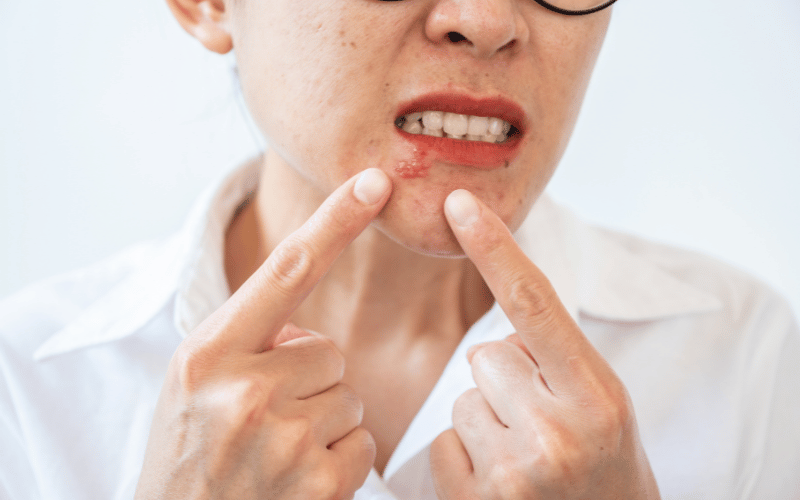Fact 7: A Timeline for Outbreaks

Every cold sore episode begins subtly, often without drawing much attention. This initial phase, termed the prodromal phase, is characterized by vague sensations rather than evident symptoms. Individuals may experience a tingling, itching, or even a mild burning sensation at the site where the cold sore is about to erupt. Though invisible to the naked eye, the body sends these signals as a forewarning of the viral activity ramping up beneath the skin’s surface. Recognizing these symptoms is paramount. It offers the best window of opportunity for interventions, such as antiviral creams or oral medications, potentially preventing the cold sore from developing further or reducing its severity.
As the HSV-1 virus escalates its activity, the next phase materializes, revealing itself in the form of fluid-filled blisters. These blisters, often forming clusters, become the hallmark of a cold sore outbreak. They sit predominantly on the lip border, though they can emerge anywhere around the mouth. The skin beneath them may appear red or swollen, a stark contrast to the translucent hue of the blister itself. At this juncture, the virus is highly active, making this the most contagious stage. It’s critical to avoid sharing utensils, personal products, or engaging in intimate contact to prevent passing the virus to others.
The journey of a cold sore takes a painful turn as the blisters burst open, marking the ulcer or weeping stage. This rupture results in the formation of shallow, open sores that ooze clear fluid. This stage, albeit distressing, is a pivotal point in the cold sore’s life cycle. The exposed ulcers are vulnerable to secondary bacterial infections. Maintaining impeccable hygiene and refraining from touching the sores can avert complications. The pain might intensify, given the raw nature of the ulcers. Over-the-counter pain relief or topical analgesics can offer respite.
Nature’s healing mechanism kicks in as the ulcers begin to dry out, heralding the scabbing phase. As the name suggests, crusty, brownish scabs replace the open sores, protecting the healing skin underneath. This stage, while signaling recovery, comes with its set of challenges. The scabs, in their quest to heal, can tighten and crack, especially when the mouth is opened or stretched. This can lead to minor bleeding or discomfort. Moisturizing the area with lip balms or petroleum jelly can mitigate the tightness, promoting a more comfortable healing environment.
The journey concludes with the resolution phase. One by one, the scabs begin to flake off, revealing new, tender skin underneath. This skin might be slightly reddened initially but gradually regains its natural tone. While the physical manifestation of the cold sore has resolved, the virus retreats back to its dormant state, lying in wait for the next activation trigger. This cyclical nature of HSV-1 underscores the importance of continuous preventive measures, even when the skin appears clear. (7)